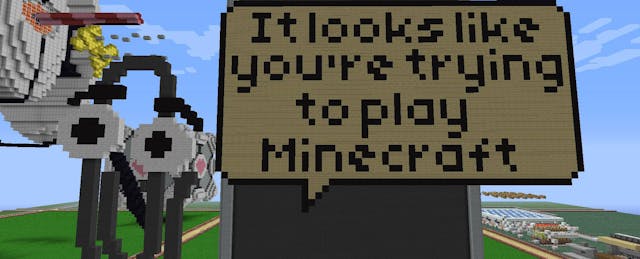Educators had the right to feel a little freaked out about Microsoft’s announcement that it was acquiring Minecraft maker Mojang.
Microsoft’s news release stated, “The Mojang team will join Microsoft Studios, which includes the studios behind global blockbuster franchises Halo, Forza, Fable and more.” Xbox head Phil Spencer’s blog said, “Minecraft adds diversity to our game portfolio and helps us reach new gamers across multiple platforms.” And Mojang’s own blog post noted, “We’re confident that Minecraft will continue to grow in an awesome way.”
Not a single initial announcement noted a key--and strong--market for Minecraft: K-12 education. Which probably led teachers to turn to the formal dictionary definition of “awesome” after hearing the news: causing feelings of fear and wonder.
It’s an opportunity Microsoft itself should mine.
Minecraft is huge in education--in awareness, momentum and popularity. It’s not an overstatement to say that, despite the current divisive debate over the role of education technology in classrooms (think iPads, or student data safeguards), one of the few products that tech-savvy teachers nearly universally agree upon is Minecraft. At a time when much game-based learning is just starting to make its way past the sign-in sheet at the administration office, Minecraft is one of the rare “commercial” games that has been embraced by educators for its open-ended structure, its flexibility (especially for teaching STEM disciplines, such as physics, math and computer science), and its addictive appeal to students. Non-profit Common Sense Media, which runs the education review site Graphite, gives Minecraft its highest rating for “learning.”
Much of the credit for this goes to both teacher evangelists and to TeacherGaming, which is the exclusive licensee to sell a special, discounted version of Minecraft--officially supported by Mojang--to schools, museums and libraries, dubbed MinecraftEdu (it, too, gets Graphite’s highest rating).
But absolutely none of this was reflected in the initial news from Microsoft or Mojang. And Microsoft’s on-again, off-again education strategy (which now appears on-again due to the release of Office Mix in May) hasn’t always inspired confidence for its consistency.
How Microsoft acts with this acquisition will likely either upend any doubts, or cement them.
With the Mojang buy, Microsoft will have an automatic presence in two hot and growing areas of importance in K-12 schools: STEM education, and game-based learning. It could choose to:
- Maintain the licensing and direct support relationship for TeacherGaming’s MinecraftEdu,
- Distribute Minecraft directly to schools as a Microsoft Education initiative (perhaps also buying TeacherGaming), or
- Let education-specific efforts wither as it pursues world domination in mass market video games.
Early indications are somewhat promising, if not yet specific. Microsoft CEO Satya Nadella did cite education in an appearance later the same day, noting at the Seattle Metropolitan Chamber of Commerce annual luncheon, “If you talk about STEM education, the best way to introduce anyone to STEM or get their curiosity going on, it’s Minecraft.”
As to questions about MinecraftEdu, at the moment Microsoft only will officially respond that it praises TeacherGaming’s version as a unique and worthwhile program, and adds that what’s been done with MinecraftEdu aligns with its goals. Microsoft says it looks forward to expanding Minecraft’s presence in classrooms and other educational settings. TeacherGaming itself has been silent on what the acquisition might mean.
It’s an opportunity Microsoft may not get again: using a widely-praised game to also build its education cred.


